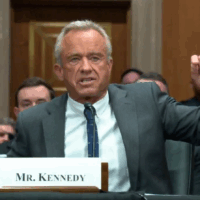A campaign to reduce stigma associated with substance-use disorders has shown it can change attitudes and beliefs about people with drug addictions and increase support for harm-reduction strategies.
The campaign, “Life Unites Us,” also found a need to target the campaign to health care workers who are often the first line of contact to offer treatment for substance-use disorder.
The campaign is led by Shatterproof, a national nonprofit focused on ending the nation’s SUD epidemic. The company has partnered with the Kentucky Opioid Response Effort for a communications and behavior-change intervention aimed at reducing addiction-related stigma. It’s called “Unshame KY.”
“Much like diabetes or heart disease, addiction is a chronic illness,” Eric Friedlander, secretary of the Cabinet for Health and Family Services, said in an e-mail. “Sadly, addiction often is looked upon as a moral failure and those suffering from the disease are labeled in ways that affect the way the public sees them, the way they see themselves, and their ability to seek care.
“To change the course of the opioid epidemic in Kentucky, we must first eradicate the stigmas associated with addiction so that more individuals can move beyond these feelings of shame or hopelessness and toward a path that leads to longer, healthier lives.”
Research has found that addiction stigma is significantly reduced when individuals can put a face to the disease of addiction and also hear their stories of healing, remission, and recovery and that’s what Kentucky’s program is designed to do via social media and community outreach.
Since the campaign began in March, there have been 570,000 total impressions – the number of times the Unshame content was displayed through social media channels – and 218,000 video views, according to the health cabinet. Changes in stigma will be re-evaluated at the close of the campaign in 2023.
The campaign has hosted free monthly webinars that address why words we use related to addiction matter, how harm reduction helps, issues around treatment and recovery and various drivers of stigma. They can be viewed on the program website. The next one, “Improving OUD Treatment for LGBTQ+ Communities,” will be presented from 1-2 p.m. ET June 30. Click here to register.
Unshame KY welcomes community groups and individuals to join the effort by sharing their story with others, along with the 57 other community-based organization that have already done so. To join, click here to fill out an assessment form.
Findings from the first year of the Pennsylvania campaign, which started in 2020, were presented at the Rx and Illicit Drug Summit in Atlanta; Tom Valentino, digital managing editor for Addiction Professional, writes about some of those findings.
The campaign was driven by Shatterproof’s research that found seven of the nine main drivers of SUDs are driven by stigma, either entirely or at least in part, Valentino reports.
The need to decrease stigma about SUD is especially important in rural areas, where research has found higher levels of stigma toward people who use opioids for nonmedical reasons, including a study by Oak Ridge Associated Universities.
The researchers measured the impact of their campaign in several ways, including statewide surveys and scheduled focus groups.
Shatterproof CEO Gary Mendell told Valentino that the survey found a willingness to live with someone with an opioid-use disorder or to continue a relationship with a friend struggling with an OUD; a higher willingness to provide the overdose-defeating drug naloxone to friends and family; and an openness to having treatment centers near their homes.
In addition, those who had viewed the campaign more often agreed that the opioid epidemic was a serious problem in their community, that medication assisted treatments for OUD are effective; and that they were more supported harm reduction strategies.
Asked what they learned in the first year of the campaign, Mendell talked about the need to address stigma among health-care professionals.
“One thing we learned was that there was a need to target medical personnel and health-care providers, as they are often the first people a victim of an overdose will see,” he told Valentino. “By better informing these health-care workers on the stigma that exists and the importance of encouraging treatment, we open the doors for an individual to get the help they need.”
Mendell said the campaign differs from others in that it prioritized including the recovery community in the decision-making; allowed for flexibility as the campaign evolved; and provided tools and resources for its participants to use to further reduce stigma in their local communities.
Shatterproof conducted the campaign in partnership with The Public Good Projects, the Pennsylvania Department of Drug and Alcohol Programs and Penn State.





